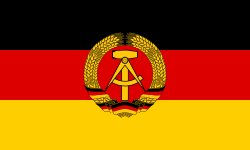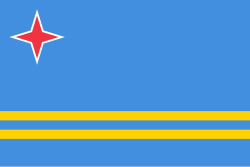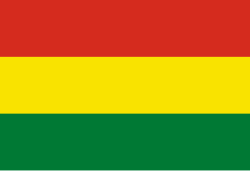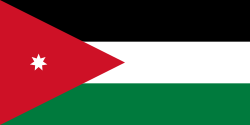Fäktning vid olympiska sommarspelen 1988
| Fäktning vid olympiska sommarspelen 1988  | ||||
|---|---|---|---|---|
| Värja | herrar | |||
| Värja, lag | herrar | |||
| Florett | herrar | damer | ||
| Florett, lag | herrar | damer | ||
| Sabel | herrar | |||
| Sabel, lag | herrar | |||

Vid olympiska sommarspelen 1988 i Seoul avgjordes åtta grenar i fäktning, sex för män och två för kvinnor, och tävlingarna hölls mellan 20 och 30 september 1988 i Olympic Fencing Gymnasium. Antalet deltagare var 317 tävlande från 42 länder.
Medaljfördelning
| Medaljfördelning | |||||
|---|---|---|---|---|---|
| Placering | Nation | Totalt | |||
| 1 | 3 | 3 | 1 | 7 | |
| 2 | 2 | 1 | 0 | 3 | |
| 3 | 1 | 1 | 3 | 5 | |
| 4 | 1 | 1 | 2 | 4 | |
| 5 | 1 | 0 | 2 | 3 | |
| 6 | 0 | 1 | 0 | 1 | |
| 0 | 1 | 0 | 1 | ||
Medaljörer
Herrar
Damer
| Gren | Guld | Silver | Brons |
| Florett, individuellt | |||
| Florett, lag | Sabine Bau Anja Fichtel-Mauritz Zita Funkenhauser Anette Klug Christiane Weber | Francesca Bortolozzi-Borella Annapia Gandolfi Lucia Traversa Dorina Vaccaroni Margherita Zalaffi | Zsuzsa Jánosi Edit Kovács Gertrúd Stefanek Zsuzsanna Szőcs Katalin Tuschák |
Deltagande nationer
Totalt deltog 317 fäktare (248 män och 69 kvinnor) från 42 länder vid de olympiska spelen 1988 i Seoul.
|
|
Källor
- ”Fencing at the 1988 Seoul Summer Games”. Sports Reference. Arkiverad från originalet den 5 december 2008. https://web.archive.org/web/20081205115005/http://www.sports-reference.com/olympics/summer/1988/FEN/. Läst 5 januari 2012.
- Den här artikeln är helt eller delvis baserad på material från engelskspråkiga Wikipedia, tidigare version.
Externa länkar
 Wikimedia Commons har media som rör Fäktning vid olympiska sommarspelen 1988.
Wikimedia Commons har media som rör Fäktning vid olympiska sommarspelen 1988.
| ||||||||||||||
| |||||||||||
Media som används på denna webbplats
Pictograms of Olympic sports - Fencing. This is unofficial sample picture. Images of official Olympic pictograms for 1948 Summer Olympics and all Summer Olympics since 1964 can be found in corresponding Official Reports.
Olympic Rings without "rims" (gaps between the rings), As used, eg. in the logos of the 2008 and 2016 Olympics. The colour scheme applied here was specified in 2023 guidelines.
Olympic Rings without "rims" (gaps between the rings), As used, eg. in the logos of the 2008 and 2016 Olympics. The colour scheme applied here was specified in 2023 guidelines.
Författare/Upphovsman: B1mbo, Licens: CC BY-SA 2.5
Drawing of a gold medal, based on Olympic rings.svg.
Författare/Upphovsman: B1mbo, Licens: CC BY-SA 2.5
Draw of a silver medal, based in Olympic rings.svg.
- The joining of the rings is not correct drawn.
Författare/Upphovsman: B1mbo, Licens: CC BY-SA 2.5
Drawing of a bronze medal, based on Olympic rings.svg.
Government Ensign of Hungary, flown by state-owned, non-military vessels from 1957 to 1990.
The flag of Aruba
The civil ensign and flag of Belgium. It is identical to Image:Flag of Belgium.svg except that it has a 2:3 ratio, instead of 13:15.
| Bolivias flagga* | |
|---|---|
| country | Template:I18n/Republic of Bolivia |
| används av | Bolivia |
| från | 1851 |
| till | Present |
| skapad av | Government of Bolivia |
| format | 15:22 |
| form | rektangulär |
| färger | röd, gul, grön
flag has 3 horizontal stripes |
| andra egenskaper | A horizontal tricolor of red, yellow and green. |
The flag of Brazil from 1968 to 1992 with 23 stars.
Författare/Upphovsman: Scroch, Licens: CC BY-SA 3.0
Flag of Bulgaria (1971-1990). Flag of Bulgaria with Bulgarian coat from 1971.
Författare/Upphovsman: Scroch, Licens: CC BY-SA 3.0
Flag of Bulgaria (1971-1990). Flag of Bulgaria with Bulgarian coat from 1971.
bendera Indonesia
Chinese Taipei Olympic Flag. According to the official website of Chinese Taipei Olympic Committee, Blue Sky(circle) & White Sun(triangles) above the Olympic rings is neither the National Emblem of the Republic of China, nor the Party Emblem of Kuomintang (KMT), but a design in between, where the triangles do not extend to the edge of the blue circle, as registered at International Olympic Committee in 1981 and digitally rendered in 2013. Besides, the blue outline of the five-petaled plum blossom is broader than the red one. Moreover, the CMYK code of the blue one and the Blue Sky & White Sun is "C100-M100-Y0-K0", and different from the Olympic rings (C100-M25-Y0-K0). Note that it's the only version recognized by IOC.
Flag of Portugal, created by Columbano Bordalo Pinheiro (1857–1929), officially adopted by Portuguese government in June 30th 1911 (in use since about November 1910). Color shades matching the RGB values officially reccomended here. (PMS values should be used for direct ink or textile; CMYK for 4-color offset printing on paper; this is an image for screen display, RGB should be used.)
Flag of Romania, (21 August 1965 - 22 December 1989/officialy 27 December 1989).

Construction sheet of the Flag of Romania as depicted in Decree nr. 972 from 5 November 1968.
- l = 2/3 × L
- C = 1/3 × L
- S = 2/5 × l
Flag of Romania, (21 August 1965 - 22 December 1989/officialy 27 December 1989).

Construction sheet of the Flag of Romania as depicted in Decree nr. 972 from 5 November 1968.
- l = 2/3 × L
- C = 1/3 × L
- S = 2/5 × l
Flag of the Philippines (1919–1936)















































